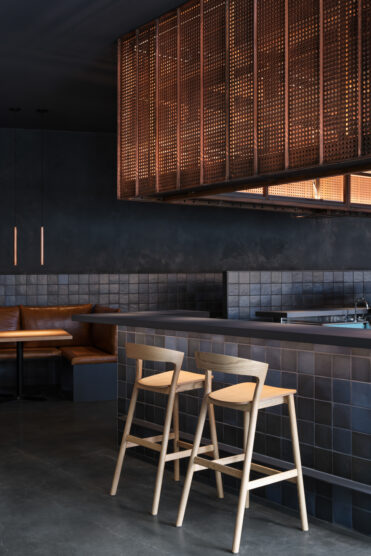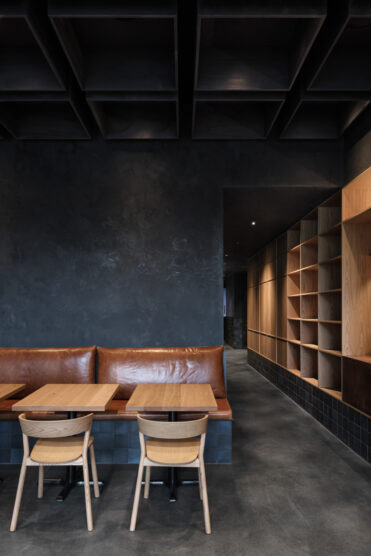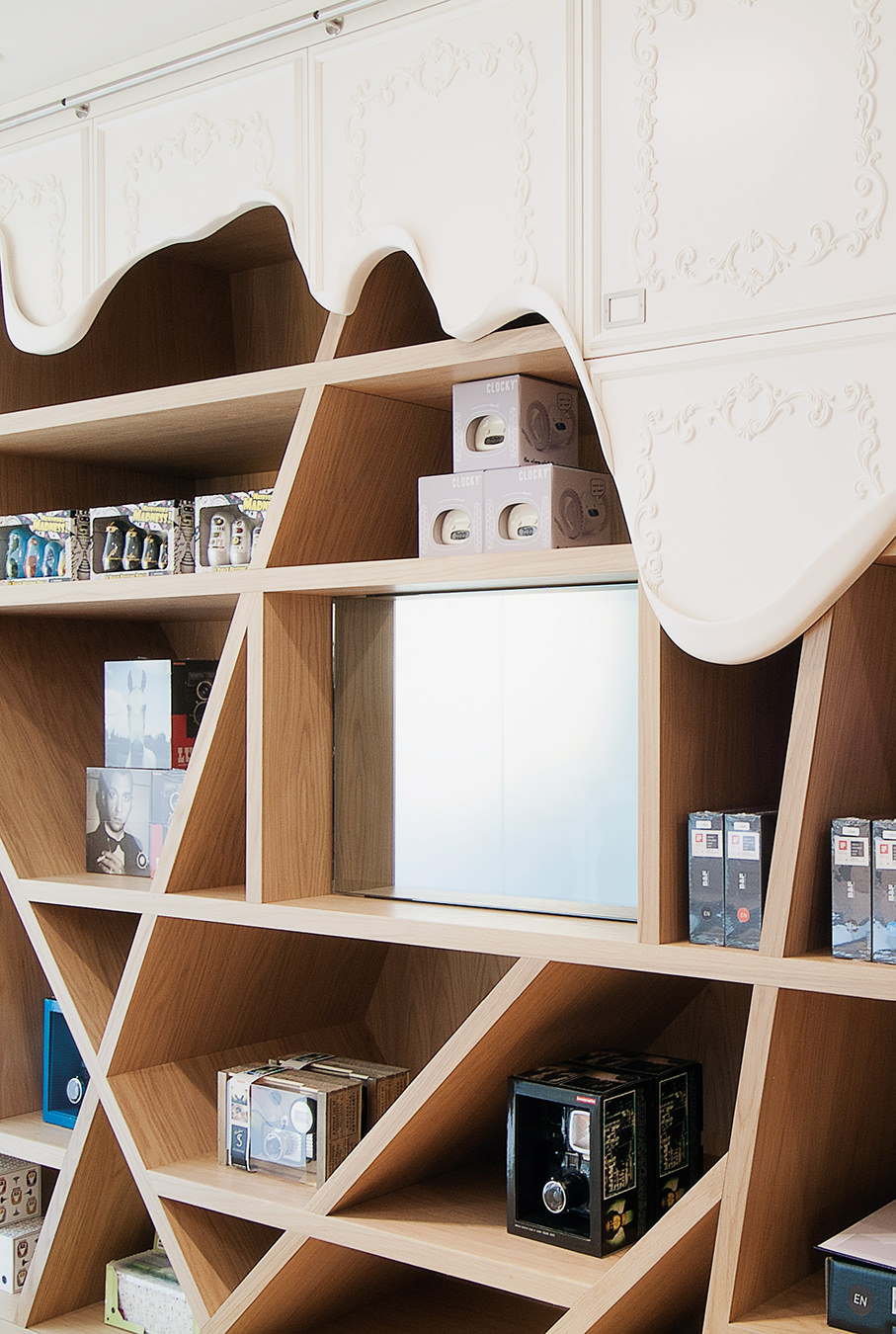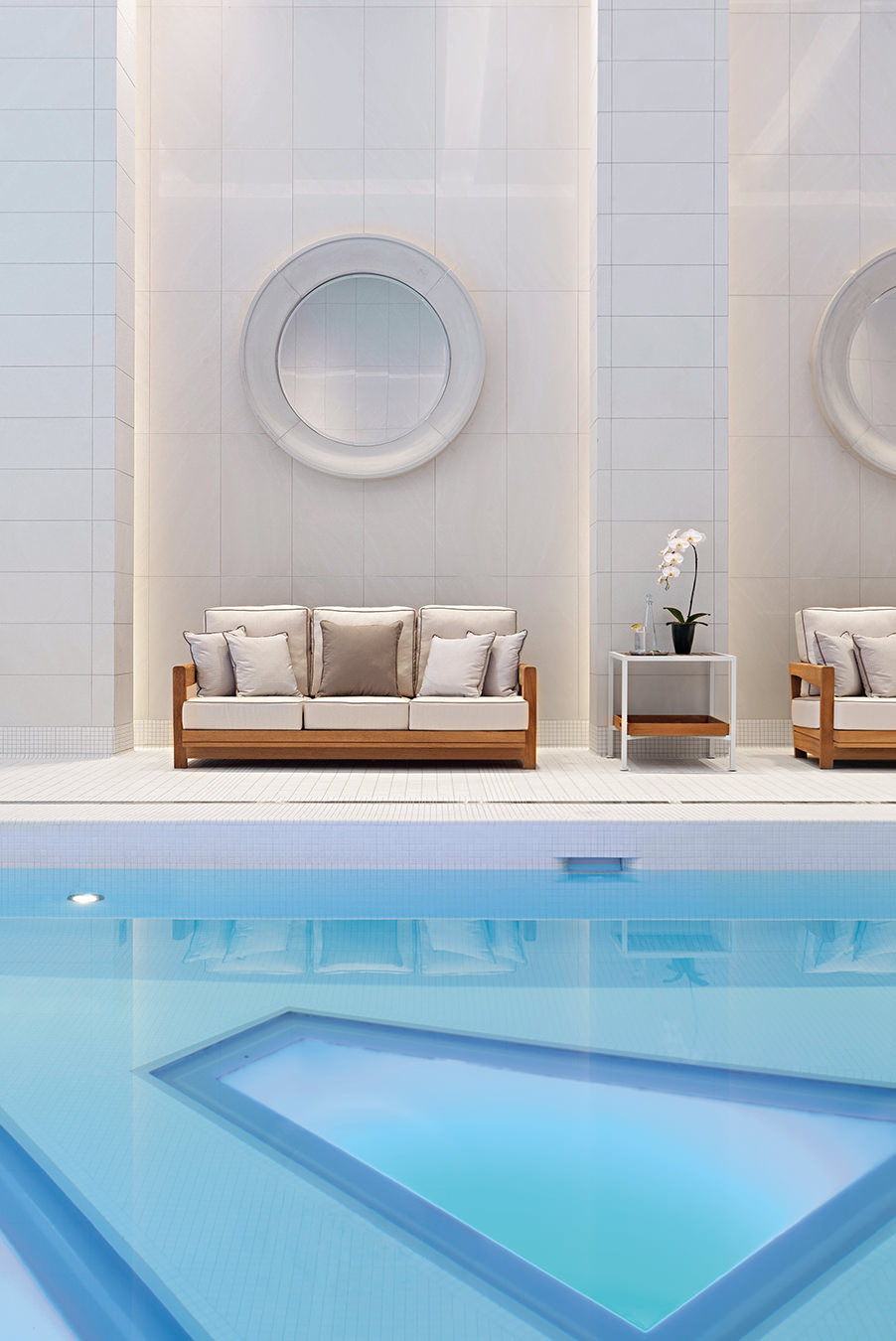A Coal Harbour Restaurant Named for a Roman Goddess
Within the walls of Nox, designed by Studio Leckie, dark-blue and leather interiors were inspired by the goddess of the night.

Nox, the Roman goddess of night, is most often depicted in all black, driving a chariot with a starry veil streaming behind her as she beckons in the shroud of evening. The daughter of Chaos, Nox, along with her daughter who brings in the daylight, offered structure to a new and disorderly universe.
So when Vancouver’s Leckie Studio was tapped to design a Coal Harbour restaurant named after the powerful goddess herself, she was a natural starting point. Emerging from the dark-blue colour palette are subtle moments of order, perhaps unnoticed by the undiscerning eye but nonetheless felt in the serenity of the space. Storage is sneakily tucked into tile plinths, bar footrests disappear into grout lines, booth seating, millwork transitions, and wall bases all are designed to accommodate the width of exactly three square tiles to minimize waste and construction energy, and coffered ceilings are geometric and orderly.


For Leckie Studio, an esteemed architecture and design studio founded in 2015 by Michael Leckie, bringing order and cohesion to the tricky L-shaped floor plan was important. To do this, they created distinct zones using partition walls and ceiling treatments united through the inky-blue colour and wood, leather, and copper accents. The two dining rooms, the main area in the front by the street and the private one in the back, are connected by the kitchen, which guests moving between the two or to the washroom can peek into from the millwork-lined hallway.
From the entryway and host stand, a row of tables hugs the righthand side of the restaurant, against the window. Cognac-coloured patinaed leather banquettes complement pale-wood tables and chairs. To the left is a large rectangular standalone bar, above which hang perforated copper panels illuminated from within to cast speckled shadows throughout the restaurant. The bar, with a porcelain-tiled base in varying hues of dark blue and grey countertops, seats 12. The neat rows of blue square tiles also adorn parts of the walls and run along the baseboards beneath the banquettes and hallway shelves.


The blue-grey brush strokes of the stained-concrete floors and columns match those on the textured venetian-plastered walls. Much like the dark of night that obscures colour, most of the restaurant is designed in the same deep indigo, especially indistinguishable in the moody lighting, and different elements are instead distinguished by colour and shape.
Mounted against the wall, custom light fixtures made from tubes of oxidized copper radiate soft light from both ends. The reddish hue from the copper bar protruding up from the fixture makes the lighting seem perpetually set at dusk or dawn. Made from Baltic birch plywood boxes, the midnight blue coffers hide more lighting, the panels disappearing into the matching colour of the ceiling as if, perhaps, leading to a place above the underworld where Nox resides.
Though Nox Restaurant shut its doors in 2023 after just over a year of operation, Leckie Studio continues to receive recognition for the project, recently winning runner-up at the Gray Awards. Now, the interiors serve as a snapshot in time, a study of the fleeting nature of design as an art form just as Nox’s night must always give way to a new dawn.
Photography by Ema Peter.




